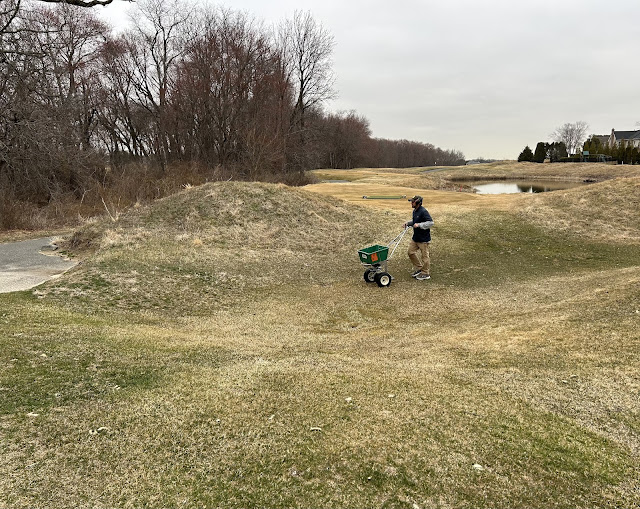As you may notice when playing the course, we have begun the process of mowing down the Native areas. This year's heavy spring rains, followed by a whole lot of summer heat led to a wonderful growing environment for weeds. Our pre-emergent herbicide applications lost their efficacy more rapidly, and keeping up with the plethora of weeds was nearly impossible. Coincidentally, the USGA just released an article that addresses this issue: Why Are the Naturalized Areas So…Natural?
 |
| The native mound separating #6 and #13 has been cut down. |
Unfortunately, due to lingering supply chain issues, we won't be able to get this mowing process completed quickly. Our versatile Ventrac, which is used for mowing down the Natives has been forced to work double-duty this year. For most of the week we have to use this machine with a different mowing deck for trimming around green and tee complexes. Therefore, there is only a day or two that we can work on cutting down the high grass.
Why do we need to use the Ventrac around the tees and greens? Well, we ordered a replacement trim mower for use in these areas on June 15, 2023. Prior to ordering we asked about the lead time and were told, "You're looking at 8 to 10 months, that may change as supply chain issues ease..."
Change it did, but not in the way we were hoping for. Had that timeframe been accurate, our existing trim mower would have lasted until its replacement arrived. However, that was off just a bit (sarcasm intended), as we are now at 27 months--three times the estimate--and still don't have that piece of equipment (in addition to another mower that was ordered at the same time). The old trim mower's frame is broken in half, rendering it unusable, thus making the Ventrac the only option we have.
 |
| Still waiting for your replacement... |
Until that new trim mower arrives, we will continue picking away at the Native areas as time allows.
















































